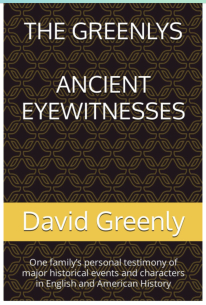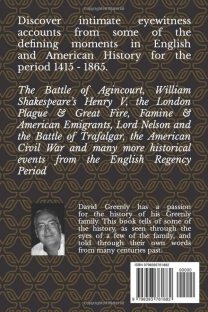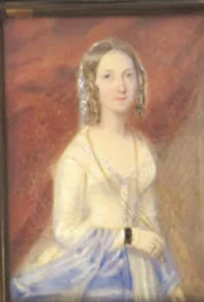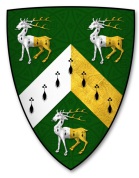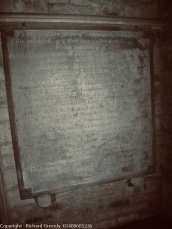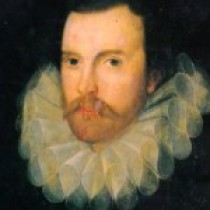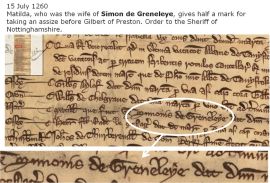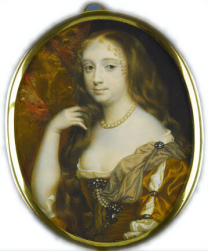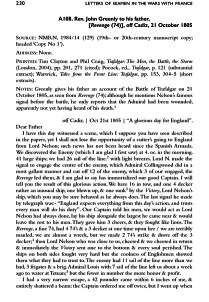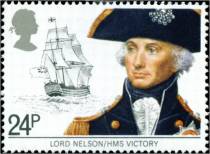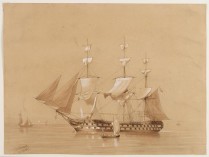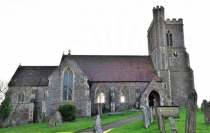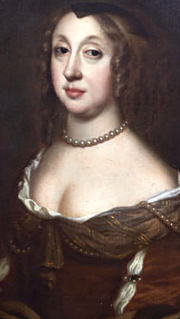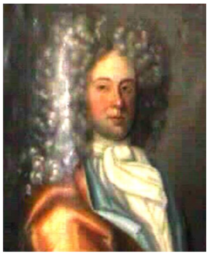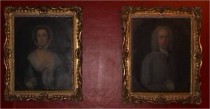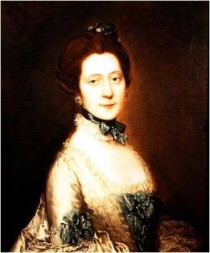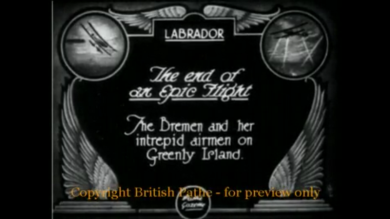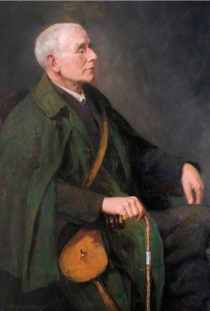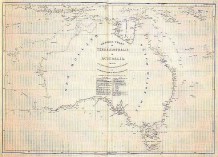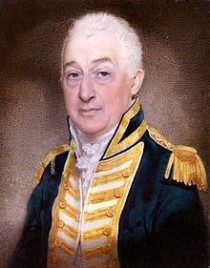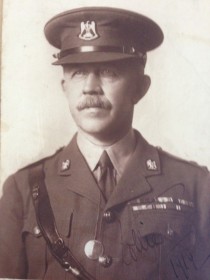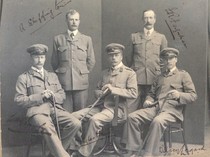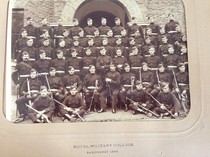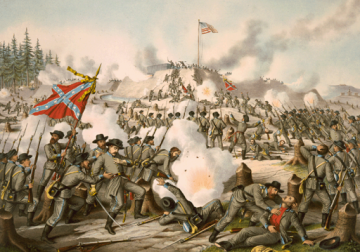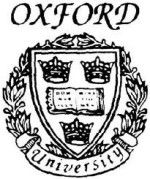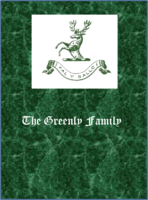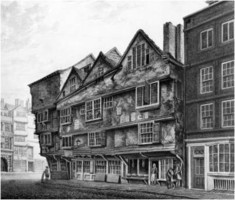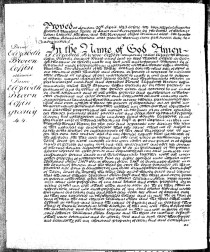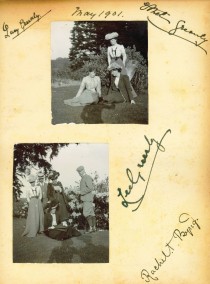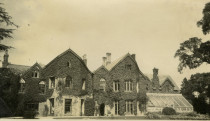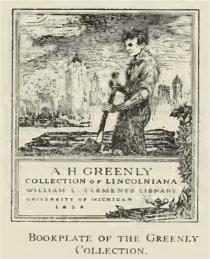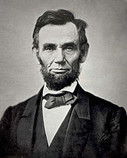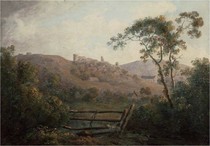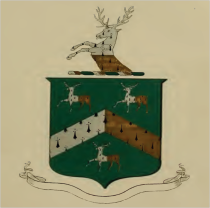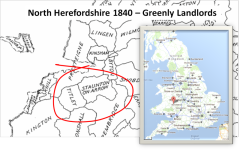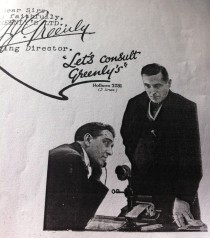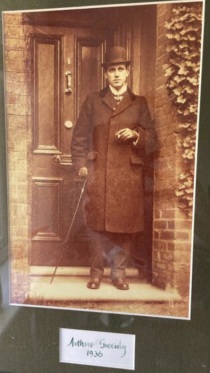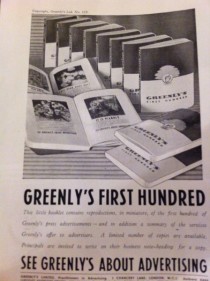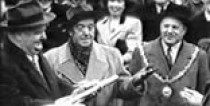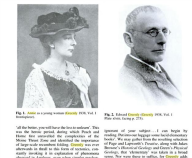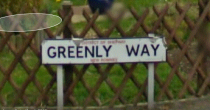Adobe Acrobat document [552.9 KB]
Come back soon ....
Lady Elizabeth Greenly
Elizabeth Brown Greenly was born at Titley Court, Herefordshire, on the 27th November, 1771, the only child of William Greenly and his wife Elizabeth (née Brown). They had a town house in Abergavenny and property near Cwmdu, Breconshire, as well as the estate in Herefordshire. William Greenly was said to have been 'an excellent scholar and antiquary, and a man of great goodness of heart and simple manners'.
Elizabeth, usually known as Eliza, was said to be 'a person of so much real merit, & of such superior & general cultivation of mind, that her superiority to the contemporary and surrounding society was too self-evident not to excite astonishment' ... She was an ardent supporter of the Welsh causes of the day and was one of the first to support Iolo Morganwg (Edward Williams 1747 - 1826) beginning her patronage in 1806, and continuing for the rest of his life. Lady Llanofer's mother (Georgina Mary Ann Waddington, née Port) was the same age as Eliza and the two were close friends. A frequent visitor to Llanofer, Eliza no doubt encouraged the interest of young Augusta Waddington (later Lady Llanofer) in these matters.
She had a good voice and on her visits to the Waddington family she would entertain them with her singing - usually the old Welsh folk songs of which she was very fond. According to Frances (Lady Llanofer's sister, who later became Baroness Bunsen) Eliza's voice 'was not of superior quality, but her taste was refined, & she had an admirable collection of songs'. Perhaps it was this introduction to the old tunes while she was young that made Augusta Waddington so enthusiastic about Welsh music throughout her life.
Eliza was good natured and attractive and 'considered clever, of a religious nature and inclined to literary pursuits'. She had a number of suitors but, according to Baroness Bunsen, any man who might have been a suitable husband for Eliza, and acceptable to her, was 'frightened off from prosecution of his suit, by the ever-increasing demands made upon him as conditions of consent to marriage, by the Mother & Grandmother' ... The Grandmother, Mary Brown, was head of the family, 'adding whalebone to Mrs. Greenly's buckram, in all family concerns', as Baroness Bunsen remarked in her Reminiscences written in 1874.
The man Eliza eventually married, in 1811, was Admiral Sir Isaac Coffin, a man more than ten years her senior, and an erratic seafarer who suffered from gout. He took the name Greenly on marrying Eliza, heiress to a considerable fortune. Eliza was said to have 'some eccentric habits (such as getting up in the middle of the night to write sermons)' and maybe this contibuted to his less than satisfactory behaviour towards her following their marriage. Her behaviour appears to have been without fault, but after the first year of marriage he went to visit friends and stayed away for seven years!
He communicated with her only rarely, and on the few occasions he did return, it appears that he was very disagreeable. Eliza once wrote, 'One moment he makes me love him, at another his unfeeling letters and actions completely repel me'. Sir Isaac's relatives and friends sympathised with the long-suffering Lady Coffin Greenly.
Eventually Sir Isaac dropped the name Greenly, and Lady Greenly stopped using the name Coffin.
In 1823 Augusta Waddington married Benjamin Hall III and they lived in a rented house in Herefordshire where they were neighbours of Lady Greenly. She no doubt continued to share her enthusiasm for the Welsh language, which she spoke extremely well, with the young Mrs. Hall. '... contrary to the general belief today, there was still a great deal of Welsh spoken in Herefordshire at the period'. In spite of the age difference between the two woman, Lady Greenly and Augusta Hall were great friends, and Eliza Greenly became one of the god-parents of Augusta and Benjamin's first child, Augusta Charlotte Elizabeth (later Mrs. Herbert).
Lady Greenly, always an ardent supporter of the Welsh causes of the day, attended every eisteddfod in south-east Wales. In 1833 she wrote to her cousin Louisa Hastings :-
'To all, who from ignorance or prejudice oppose these national meetings, [i.e. eisteddfodau] let it be said that whatever preserves nationality - that love for the language, customs, habits and appearance of our forefathers which has most commonly a strong hold on the uncorrupted mind, ought to be encouraged, for it cannot be doubted that the prevalence of such feelings is the safeguard of a people.'
Mrs. Hall (later Lady Llanofer) won the prize for the best essay on the advantages of preserving the language and dress of Wales, at the Cardiff Eisteddfod of 1834, but Lady Greenly had also sent in an entry. She used the pseudomyn Llwydlaes, and her entry was complimented for its style and language. Her generous and unassuming nature enabled her to write to her cousin, Louisa Hastings:-
'Mrs. Hall was called upon to receive the Ring from Lord Bute amidst a thunder of applause - she had kept the secret so profoundly that everybody was as much surprised as pleased, and I hope that even I (Llwydlaes) did not envy her success too much' ...
A week later she wrote again to her cousin saying that 'Dear Mrs Waddington ... told me I ought to have had the Ring, for I had no one to assist me in writing the essay which was the spontaneous production of the moment. To this, however, I could not agree, Mrs. Hall took great pains and had opportunities of research which I had not, and deserves a reward for her diligence'.
In 1835 Lady Greenly suffered a slight stroke and this, together with rheumatoid arthritis caused her to be less active. Previously she had been a keen horsewoman, and spent many hours on horseback travelling between Herefordshire, Monmouthshire, Glamorganshire, and Breconshire. According to Baroness Bunsen:-
'Miss Greenly & most of her contemporaries relieved themselves from the long tyranny of whalebone by casting off all wholesome ligatures , & for the most part, condensing all visible dress into a riding habit which was rarely taken off ... the riding habit was in her case the more indispensible attire, as trotting many a weary mile was necessary after her Parents settled for good at Titley, to enable her to enjoy any of the society welcome to her ...'
From then until her death in 1839, Lady Greenly was unable to attend the eisteddfodau, although she continued to support and encourage them.
Eliza Greenly died on 29th January 1839 and was buried at St. Peter's Church, Titley, where the following inscription appears on a monument to her memory:
Sacred to the memory of the Lady Elizabeth Brown Coffin GREENLY, only child of the late William GREENLY esq. of Titley Court and of Elizabeth his wife; and wife of Admiral Sir Isaac COFFIN Bart G.C.H. who took the name of GREENLY by letters patent on his marriage.
She was born on the 27th November 1771 and died on the 29th January 1839 aged 67.
This monument is erected by her surviving parent in memory of her virtues and of her talents which she dedicated through life to the cause of religion and morality.
In her character were blended the qualities most loved of God - Piety, Humility and Sincerity joined to a clear understanding and matchless sweetness of disposition.
Her resignation and cheerfulness under severe and protracted trials attested the firmness of her faith in "him who was made perfect through suffering" and inspired the tenderest affection in those around her and the deepest sorrow at her loss.
Her remains rest in the vault underneath the tower erected by herself
at the west end of this church.
Them who sleep in Jesus will God also bring with him.
.......
